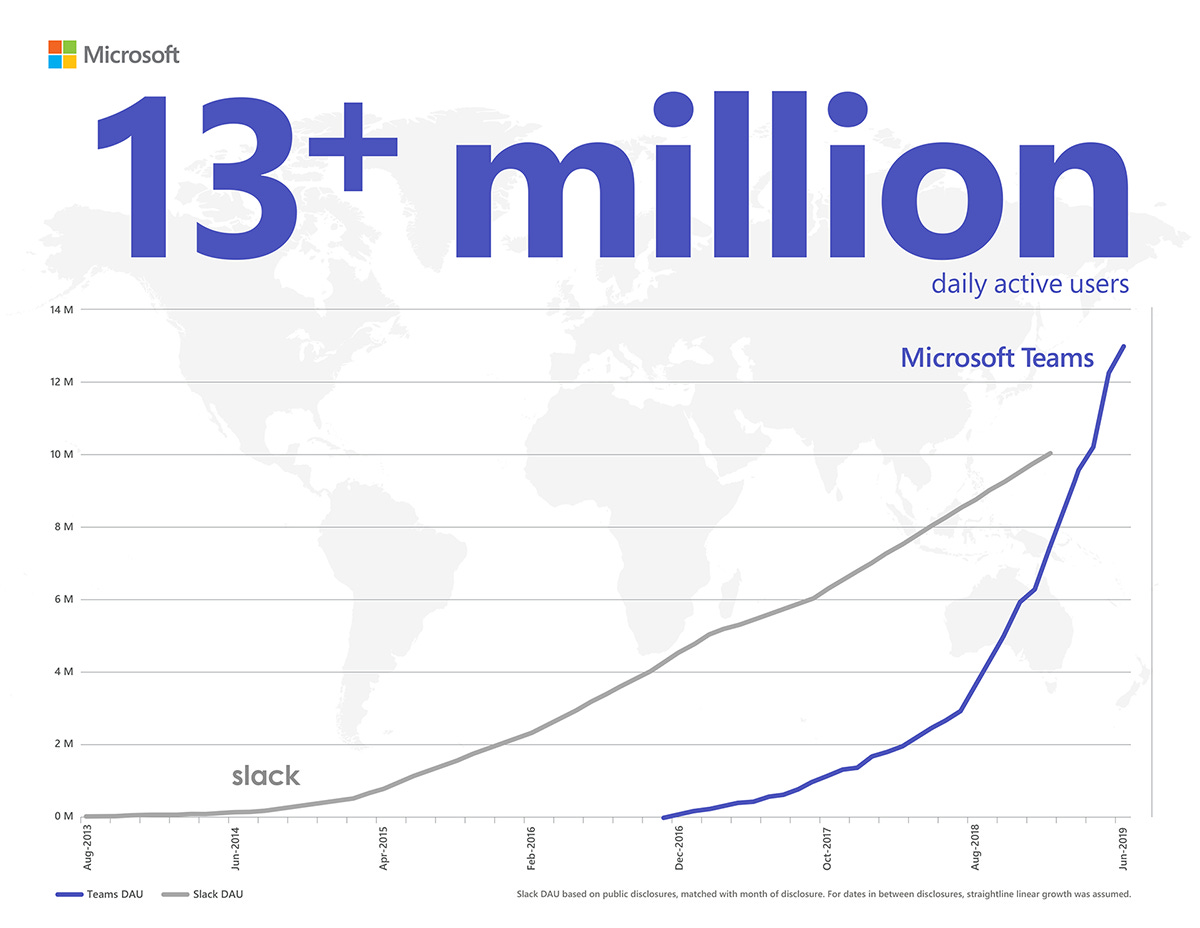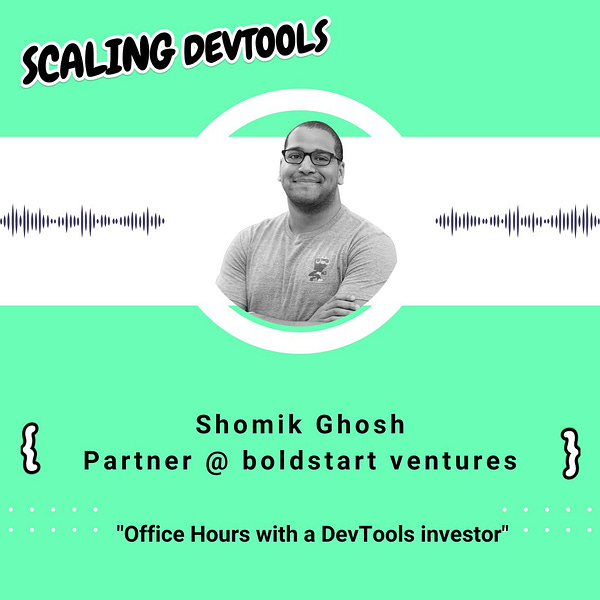
A recent thread on Slack vs Teams sparked my mind to start running on Network Density. The aspects of this have profound impact on companies so I wanted to expand upon it more.
Network Density means the depth of the network in an area vs the breadth which would be Network Coverage. Costco has broad network coverage, Trader Joe’s has high network density (although one could argue Costco has both but just go with the analogy here).
The Slack vs Teams debate is a super interesting one. By all accounts Teams has trounced Slack in terms of growth of users. But it begs the question of is Teams killing Slack? It certainly is hurting the eventual TAM of Slack for sure given that Teams is taking some users away that Slack would eventually want to target. But what about Slack’s core users?

So how I can say that when the chart above clearly shows the exponential growth of Teams. Here’s where network density and quality of users matters. While Teams is being bundled into O365, usage is top down enforced vs bottoms up adopted. I’ve worked in companies that had the Microsoft bundle and still went around IT’s back to install Slack in order to access all the features and the network. If we were to conduct a like for like comparison of engagement between the two user bases, I would be willing to bet a lot of money that Slack engagement is significantly higher.
But even more so than that, it is very hard for Teams to break into Slack’s core market because of the density. In tech especially, almost every company uses Slack. Those individuals also set up Slack when they leave to stay in touch with alumni networks and thus are all one Slack Connect away from each other. Because of this, it’s very hard for any other service to break in. So while absolutely, Teams can decrease the size of the market, Slack’s core user base is very hard for Teams to address.
This goes beyond talking about two massive products.
Take Ben Canning, who I’m fortunate to have as my trainer. Notice his Twitter tagline “I help…tech, infosec, and cybersecurity [people] optimize their health”. This is a very narrow audience for Ben to publicly put out into the world. So while sure the tagline might decrease the addressable size of the market, it certainly increases the network density within the areas Ben targets. I mean I’m freaking writing about him now, Dave Kennedy publicly tweets and even started the “Hacking Your Health” podcast with Ben. Notice all of the messaging is geared towards cybersecurity specifically and more broadly tech as being adjacent to that market.
This means less marketing needs to be done to get folks to know about Ben. And people who follow these folks are more likely to engage with Ben after hearing from people they trust. I found out about Ben through Tim Davis who found Ben through following Dave Kennedy! Decreased customer acquisition costs with higher eventual conversion.
So what does this mean for startups.
Start small before going big. Go niche to go broad. Do not overthink TAM in the beginning. I see too many founders especially utilizing AI trying to “target big markets”. The larger the market is, the more obvious it is to everyone else and the more crowded. It will take not only significant differentiation but also lots of marketing, messaging, longer sales cycles, potential RFP processes, and moving/executing faster to win in these markets. Instead focus on finding your niche and building network density.
Once you find the community that really resonates with the pain point you’re solving. The results compound. Word of mouth, validation through shared advice, and limited surface area means small teams with limited resources aren’t spread too thin having to target too much. As companies get bigger and generate more revenue, then the aperture starts to open up a bit more as the resources grow to target more adjacent areas.
Don’t forget to build up your Network Density ahead of Coverage!
Some things I enjoyed this week:
Software Snack Bites the Podcast has launched!! The first two episodes are out with Damian Schenkelman, Employee 10 at Auth0 and Emilio Escobar, CISO at Datadog. Episode 3 with Jamin Ball, Partner at Altimeter Capital is coming next week! Feel free to subscribe directly on any podcast platform you prefer including: Apple Podcasts, Spotify, Google.
Bucky always has great insights to share in his annual lookahead in infrastructure and this was no different
This was a fun chat on the Scaling Dev Tools podcast with Jack Bridger. We went much more tactical on this, conducting an office hours with an idea Jack had for a dev tools startup. Ended up being full of specific insights!
Matt continues to put out the highest value add technical content in Snack Bite format out there out of any author. Highly recommend following him and subscribing to his blog.
 Developers would love to have a zero-added-effort abstraction for infrastructure – write your application and automatically figure it out. But there's no silver bullet (yet?). A few different ways to "magically" abstract the infrastructure, each operating at a different level in… https://t.co/qAFVbsEZ23
Developers would love to have a zero-added-effort abstraction for infrastructure – write your application and automatically figure it out. But there's no silver bullet (yet?). A few different ways to "magically" abstract the infrastructure, each operating at a different level in… https://t.co/qAFVbsEZ23I’m a sucker for great messaging and this is excellent framing of the future market opportunity by MongoDB
Interesting to see Spotify shifting the listening landscape and accessibility of listeners to various artists away from the major labels
Great post by Emilio this week on how Security Teams should look at risk management
One pattern that I see quite often is that security teams believe that the responsibility of identify risks only belongs to them. This creates the scenario where security teams attempt to identify risks on systems that they have no idea about and do not involve the owners of the systems to truly provide deeper context and understanding. The typical result is security teams screaming into a void and complain how they can’t get anyone to fix the issues they’ve discovered. The pain is only increased by the fact that more often than not, the owners of those systems never get to hear from security except for when ‘bad’ things are discovered and there is a demand for some type of work to be done.
Instead, allow the system owners to perform their own risk reviews…










Another great piece Shomik!
>Start small before going big. Go niche to go broad.< love this as it applies to so many areas 🙌🏻
Great essay @Shomik. Reminds of an analogy from the Legendary Geoffrey Moore when he talks about bowling alleys & headpins. The headpin is that niche that can (hopefully) catalyze a knock-on effect where adjacent communities are adopting & using your application.
The Network Density lens injects some additional depth and suggests potential to build a moat versus Moore's "market entry & acquisition" focus with the Bowling Alley; though I still think there is healthy overlap.
As always, thanks for sharing.
For anyone curious on more of Moore. ;-)
https://www.strategy-business.com/article/16930